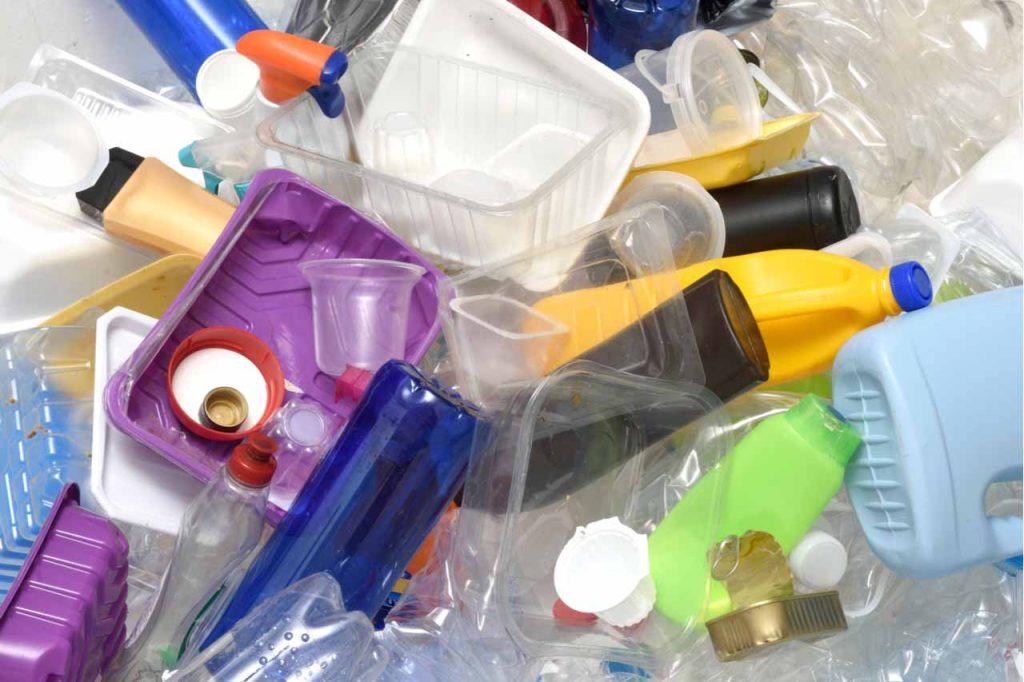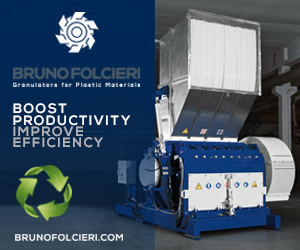
New York lawmakers have introduced three bills that would make producers financially responsible for funding the management of packaging products at their end of life. | Josep Curto/Shutterstock
New York lawmakers are trying to make their state the fifth in the nation to pass an extended producer responsibility law for packaging, and some stakeholders feel like this is the year.
New York Gov. Kathy Hochul announced her support for extended producer responsibility (EPR) for packaging in her annual “State of the State” report. She also introduced an EPR bill as part of her budget.
Another EPR bill, Senate Bill S1064, was introduced Jan. 9 by Sen. Rachel May, a Democrat. It is currently under consideration by the state’s Senate Environmental Conservation Committee.
Finally, Senate Bill S4246, the Packaging Reduction and Recycling Infrastructure Act, was introduced Feb. 6 by Democrat Pete Harckham and is also currently with the Senate Environmental Conservation Committee.
All three bills would make producers financially responsible for funding the management of packaging products at their end of life.
They all cover paper but exempt newsprint and magazines, medical devices and drugs, animal biologics, insecticides and beverage containers already in the state container deposit system. They also do not accept chemical recycling as acceptable recycling.
They also all require a needs assessment, prohibit producers from charging a point-of-sale fee to recoup costs, ban specific toxic chemicals, set minimum recycling rates and minimum recycled content levels, and require advisory councils to oversee producer responsibility organizations (PROs).
In the 2022 legislative session, two EPR bills failed to move out of committee in New York, and language on an EPR program was cut from Hochul’s proposed executive budget.
Supporter optimism
Dawn Timm, chair of the New York Product Stewardship Council (NYPSC), said she’s an EPR optimist and thinks “we’re going to be able to get something across the finish line.”
“From the NYPSC perspective, we would prefer either the governor’s version or Harckham’s version, just because the May version doesn’t provide a clear enough mechanism for municipal reimbursement,” Timm told Resource Recycling. “The structure is lacking there.”
John S. Szalasny, an executive committee member of the Sierra Club Niagara chapter, predicted in a Buffalo News opinion piece that EPR “is likely to be passed during this session as the concept is supported by Gov. Kathy Hochul and both legislative chambers.”
Hochul said in the State of the State report that New York “has led the way in progressive solid waste management and recycling policies” and needs to continue to do so by passing EPR.
“To prevent more waste from ending up in landfills, we must shift the responsibility of reducing environmental impact and managing product recycling from the consumer to the brands that create the waste,” she said.
Governor Hochul’s bill
The Waste Reduction and Recycling Infrastructure Act includes an initial registration fee for producers that ranges from $500 to $25,000 depending on company size. An advisory committee would need to be in place by June 1, 2024, and producer plans would be due by Jan. 1, 2026, to be implemented within six months of approval. The bill also includes eco-modulated fees to encourage environmentally friendly design and material choices.
The draft language exempts registered nonprofits and governments, producers with gross sales of less than $1 million or that generate less than 1 ton of packaging, and those that produce, harvest and package a raw agricultural commodity on the same site where it was grown.
Municipalities would be reimbursed by producers for the collection, transportation, recovery and processing of covered materials.
Under the bill, within five years, all glass would be required to contain at least 35% recycled content, and this mandate would increase by five percentage points every three years after that until it hit 50%.
The recycled content mandate for metal packaging would start at 50% and increase by 10 percentage points every three years until it hits 90%.
The mandate for rigid plastic would start at 20% and increase by 10 percentage points every three years until it reaches 50%. For non-rigid plastic, the initial goal is 10% and the final goal is 40%, rising in five-point increments every three years.
For cardboard, the recycled content level would start at 50% and increase in five-point increments every three years until it reaches 40%. Paper starts at 30%, increasing by 10-point increments until reaching 70%.
Any food-grade items would be exempt from recycled content requirements for at least a decade.
The minimum recovery rate would be set at 35% after five years of the bill becoming effective and the minimum recycling rate at 25%. Both of those would increase by 10 percentage points every five years until the recovery rate hits 85% and the recycling rate hits 75%. Recovery rate is defined as the amount of material collected for reuse or recycling, while the recycling rate is defined as the amount of discarded packaging collected and managed through recycling.
Within a decade, producers would also have to reach 15% source reduction by weight or unit.
Senate Bill S4246
The Packaging Reduction and Recycling Infrastructure Act would require companies with a net income of over $1 million to reduce packaging, improve recycling and recycling infrastructure, and financially support municipal recycling programs.
The bill emphasizes that PROs need to be consistent with each other and have a universal materials list, submit a five-year plan, collect data, reimburse municipalities for curbside costs, reimburse the state for the initial needs assessment, perform consumer education and offer support to small businesses for compliance.
The deadline to start carrying out the five-year plans is six months after the plan is approved or two years after the law is effective, whichever comes first.
If a municipality chooses not to provide service, then the PRO will be responsible for contracting with a private entity to provide service equivalent to garbage collection.
If SB S4246 passes, producers would need to reduce their packaging by 10% by weight in the first three years, 20% in five years, 30% by eight years, 40% by 10 years and hit a 50% reduction 12 years after the law goes into effect.
“The reductions required by this section shall not be achieved by substituting plastic for other materials or substituting a non-recyclable material for a recyclable material,” the bill states.
If a producer enters the market with 50% or more of its packaging by weight already reusable or contained within a reuse and refill system, they can apply to the department for a waiver.
Two years after the bill goes into effect, it would require all glass containers manufactured in the state to have at least 35% post-consumer recycled content, all paper bags at least 40% post-consumer recycled content and all plastic trash bags at least 20% post-consumer resin (PCR).
Those requirements do not apply to reusable or refillable packaging or containers, the bill noted.
There are civil penalties for failing to meet the requirements, and PROs would also have to pay at least 5% of the total payments received from producers into a state-run Waste Reduction and Reuse Infrastructure fund.
Producers would be exempt if they made less than $1 million in total gross revenue or used less than 1 ton of packaging material during the prior calendar year.
Senate Bill S1064
Sen. May’s bill is similar in many ways to the other legislative proposals, but has higher targets.
Producers would be expected to hit a 10% reduction in the first two years after plan implementation, with that percentage rising by 10 percentage points every two years. Recycling rates as set in the draft bill are 50% five years after implementation, 80% eight years after and 90% at the 12-year mark.
Recycled content levels in the bill are the same as the recycling rates. The fee for not meeting those standards is 20 cents per pound.
May’s bill includes a labeling section that would require companies to indicate the percentage of PCR in plastics, how to recycle the item and if it is compostable.
Producers could join a PRO or work individually to reduce packaging consumption, be responsible for recycling access in communities and pay fees based on how much packaging they used. They would also need to report usage data and submit plans. The state would be responsible for setting recommended program fees and carrying out yearly assessments.
It exempts producers that make less than $2 million in gross revenue in a year, producers that are municipalities and producers that use less than 1 ton of packaging in a year.
SB S1064 includes a convenience standard of recycling that is equivalent to that of garbage disposal.
Opposition to EPR
A coalition of businesses and business organizations is urging lawmakers to oppose the bills, arguing that they will “hurt the state’s fragile economy while also setting back by years efforts to protect its environment.”
A letter from the owner of chemical recycling company Braven states EPR will hurt existing and planned recycling efforts, ban chemical recycling technology that could recycle more material and provide “hundreds of millions of dollars in economic activity,” and jeopardize business creation by “subjecting them to costly mandates and more bureaucratic red-tape.”
“It is well-intentioned and has many intelligent, humane provisions. But – almost as an afterthought – it would unthinkingly prevent New Yorkers from reaping the benefits of an innovative technology being welcomed by 21 other states: advanced recycling,” the letter said.
The terms “chemical recycling” and “advanced recycling” generally refer to a wide array of processes that use heat, pressure and solvents to break down the molecular chains of polymers into liquids or gasses that can then be processed into fuels, oils, waxes, new plastics or other chemical products.
Nearly two dozen states have passed laws that classify chemical recycling as manufacturing, exempting it from the same regulations as waste facilities.
The Empire State Forest Products Association is also pushing back on EPR, claiming it will hurt paper recycling, and big companies such as Amazon and 3M are in opposition as well.
Getting to the finish line
Timm from said she feels good about this legislative session because she’s been working on EPR since late 2018 and back then, there was no discussion of performance standards, rates and dates. That’s changed in the most recent iteration.
“I think the Harckham bill really addresses not only packaging reduction and the inclusion of recycled content but also looks at toxics reduction,” she said. “Those are really important components.”
There have been plenty of adjustments made over the past several years, Timm said, and general support from the environmental coalition, even if some want to see stronger standards.
“We may not all see eye to eye but we all realize we’re stronger together,” she said, adding that “I think we can strike a balance and I think we’re there.”
Timm thinks the governor’s bill has the best chance of passing, because there are two new environmental committee council chairs in the Senate and Assembly, and EPR is a complex topic to educate lawmakers on even for more experienced chairs.
“I think it’s going to take a very strong position on the behalf of the executive to get it across the finish line,” she said, noting that she’s “so energized by the opportunity this provides.”
A version of this story appeared in Resource Recycling on March 14.
This story was updated March 13 with additional information on opposition to the bills.
More stories about EPR/stewardship
- Circular Action Alliance revises Colorado EPR plan
- PET Recycling Coalition doubles down on thermoforms
- Proposed Canadian EPR changes could inform US plans



